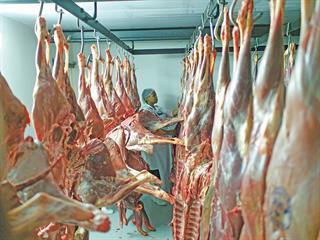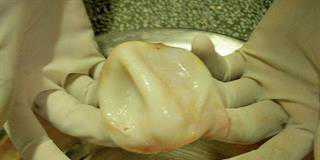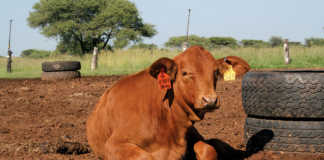
Authorised vets and meat inspectors visit approved abattoirs on a regular basis, and only healthy animals are slaughtered.
Animals are offloaded and kept for slaughter in a manner that does not involve unnecessary stress. Clean water is provided continuously and so is food if necessary. Inspectors perform an ante-mortem examination to determine if the animals are ready for slaughtering.
Sick animals are isolated and dead animals are disposed of. Injured animals are examined and a vet will decide if the meat should be disposed of. The carcass and offal of each animal is then inspected. If a disease is believed to be present, the carcass is kept for further inspection by a vet who will decide if it ought to be condemned or if the meat can be treated to render it safe. For example, carcasses infected with the larvae of the human tapeworm can be freeze-treated to kill the larvae in the meat.
After final approval, the carcasses are cooled immediately to stop bacteria from multiplying or causing accidental contamination. The temperature is kept constant until the product reaches the consumer.
Meat is handled hygienically during the entire process. All surfaces coming into contact with meat are cleaned and disinfected routinely.
The health care of the workers handling the meat is prioritised to minimise the possibility of bacteria or contagious diseases being transmitted to the meat.
Source: Department of agriculture in cooperation with the Directorate Veterinary Services.













